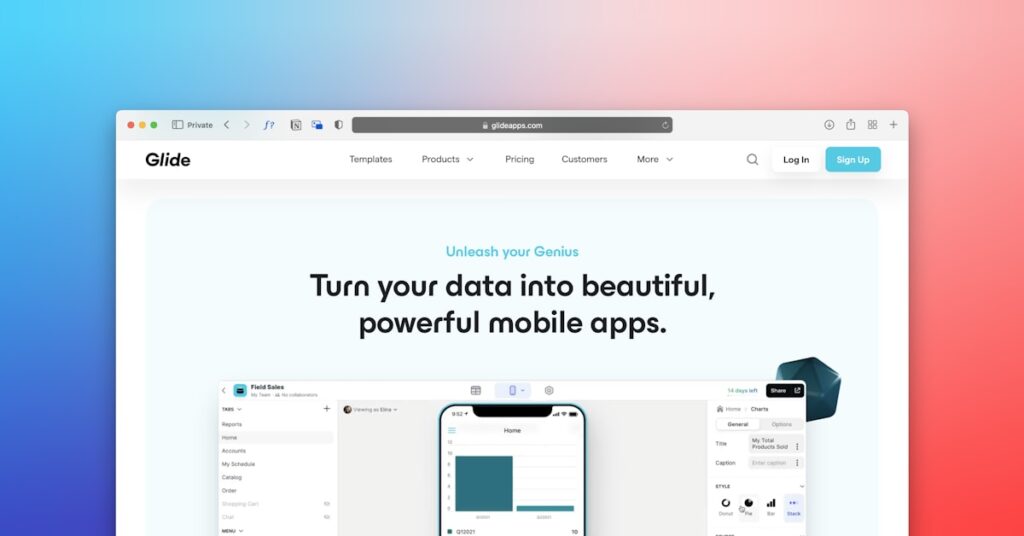Drowning in data but starved for insights?
You have massive datasets, but extracting meaningful patterns feels impossible. This slows down critical business decisions and puts you behind your competitors.
The real challenge is navigating the crowded tool market. It’s tough to find a solution that fits your technical needs without breaking the budget.
Choosing the wrong tool doesn’t just waste money. It can disrupt entire workflows and erode stakeholder confidence in your team’s data strategy.
While we’re discussing your overall data strategy, understanding data governance and compliance is equally important.
But the right tool changes this dynamic by simplifying complex data analysis, letting you focus on strategic outcomes instead of technical hurdles.
In this guide, I’ll cut through the marketing noise. I’m going to show you the best data mining tools to enhance your analysis and bolster decisions.
You’ll find platforms that fit your existing systems, scale with your data growth, and deliver the clear, actionable insights your team needs.
Let’s dive in.
Quick Summary:
| # | Software | Rating | Best For |
|---|---|---|---|
| 1 | RapidMiner → | IT managers & data analysts | |
| 2 | IBM → | Businesses needing AI governance | |
| 3 | SAS → | Data-intensive enterprises | |
| 4 | KNIME → | Business analysts & data scientists | |
| 5 | Teradata → | Large enterprises & data teams |
1. RapidMiner

Struggling to unify fragmented data across your enterprise?
Altair RapidMiner helps you connect siloed data, unlocking hidden insights and accelerating innovation with advanced analytics.
This means you can modernize existing systems while embracing next-generation AI, avoiding costly overhauls and workflow disruptions.
Deep dive into your data.
RapidMiner empowers your organization to unlock data insights and harness advanced AI automation for scalable, future-ready solutions. Here’s how it helps you synthesize and optimize current systems.
You can break down data silos and unify structured and unstructured data with advanced data fabric tools, ensuring seamless access, movement, and transformation. Additionally, it helps you activate “dark data” locked in various formats using automated extraction tools.
Plus, you can capitalize on existing investments by running SAS language code, create a data digital twin to foster shared understanding across teams, and leap into the future with generative AI and AI agents that handle repetitive tasks, freeing your teams for more strategic work.
Make data your strategic advantage.
Before diving deeper, you might find my analysis of qualitative data analysis software helpful for comprehensive insights.
Key features:
- Data Unification: Connects siloed data sources and unifies structured and unstructured data with advanced data fabric tools for seamless access and transformation.
- AI-Driven Automation: Leverages next-generation generative AI and AI agents to streamline operations, handle repetitive tasks, and provide unmatched insights.
- Scalable Analytics: Provides intuitive tools for traditional data analytics and predictive modeling, backed by technology for unlimited scalability and complex workloads.
RapidMiner features, pricing, & alternatives →
Verdict: If you’re an IT manager or data analyst seeking the best data mining tools that bridge technical requirements with budget limitations, Altair RapidMiner is a solid choice. Its ability to unify diverse data, automate tasks with advanced AI, and integrate with existing systems helps you accelerate pattern discovery and enhance decision-making.
2. IBM
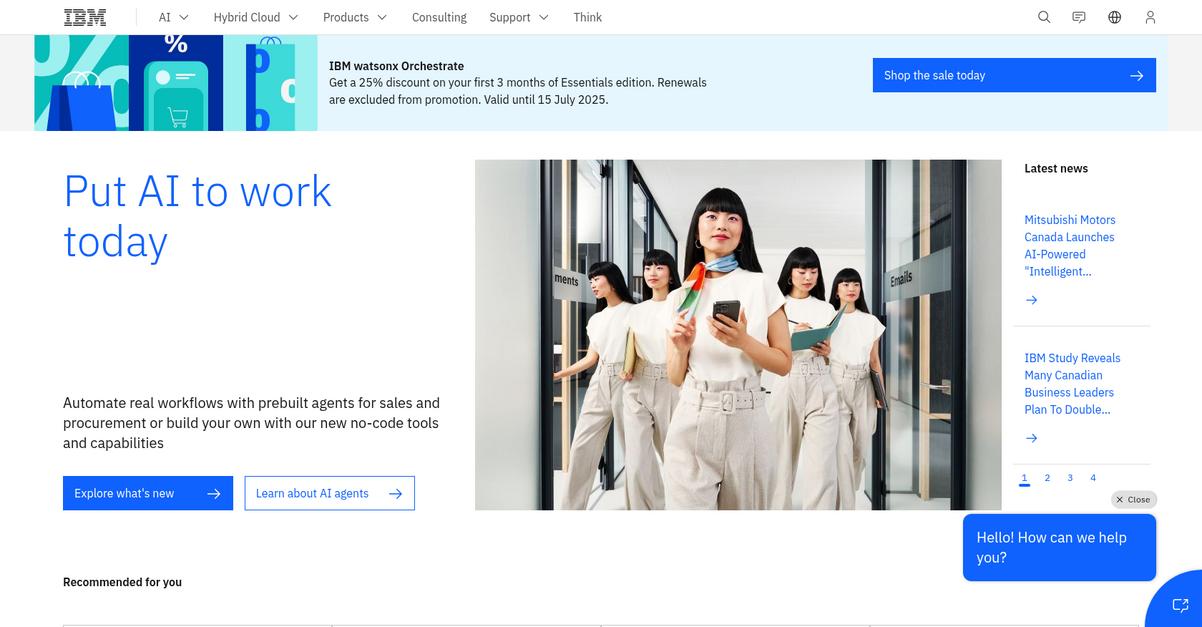
Is information overload slowing your decisions down?
IBM offers prebuilt AI agents and no-code tools to automate real workflows, including sales and procurement. This means you can quickly deploy solutions without deep coding expertise.
This addresses the common pain point of balancing technical requirements with budget limitations, as you can leverage automation for immediate productivity gains.
Here’s how IBM helps.
You can move past AI pilots to production with AI technologies built specifically for business needs. Plus, their cost-efficient AI models are tailored for business and optimized for scale.
Additionally, IBM offers robust monitoring of agentic AI performance with watsonx.governance. This capability provides essential oversight, allowing you to maintain control and security over your AI initiatives. This helps maintain scalability as data volumes grow and avoid costly reimplementation down the line, ensuring long-term success.
The result is accelerated pattern discovery and improved decision-making accuracy.
Key features:
- AI-powered automation: Automate workflows for sales and procurement with prebuilt agents or build your own using no-code tools, increasing productivity and managing costs effectively.
- Scalable AI models: Get cost-efficient AI models tailored for business, optimized for scale, and designed to support data-driven decisions and integrate seamlessly with your existing analytics.
- Agentic AI governance: Monitor and control the performance of your AI agents with watsonx.governance, ensuring security, reliability, and compliance within your IT infrastructure.
IBM features, pricing, & alternatives →
Verdict: IBM positions itself as one of the best data mining tools by focusing on practical AI application and robust governance. Its ability to automate complex workflows and provide scalable, secure AI models directly addresses critical pain points for IT managers and data analysts, ensuring seamless integration and measurable improvements in decision-making speed and accuracy.
3. SAS
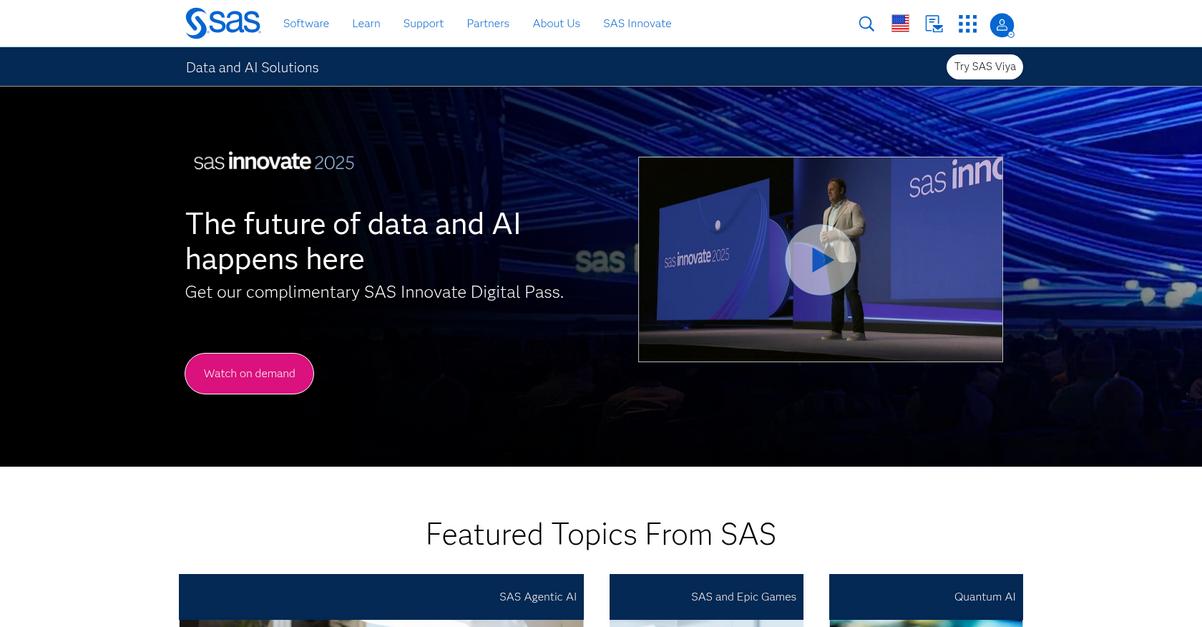
Struggling with data overload and complex decisions?
You need solutions that unlock insights from your data, making it actionable.
SAS transforms your data, helping you uncover hidden patterns and predict future outcomes with precision.
Here’s how to simplify your data analysis.
SAS provides a comprehensive platform for advanced analytics, empowering you to make smarter, data-driven decisions. Its capabilities allow you to analyze vast datasets, revealing trends and correlations that might otherwise remain unseen, and ultimately enhance your analytical workflow. You can streamline your data preparation and model deployment, ensuring reliable insights.
Additionally, SAS offers scalable solutions that adapt to your growing data needs, integrating seamlessly into your existing systems. This means you can confidently handle increasing data volumes and complexity without fear of system slowdowns or disruptions, providing the flexibility needed for future expansion and innovation.
You’ll gain unparalleled clarity.
Key features:
- Predictive Modeling: Leverage sophisticated algorithms to forecast future trends and behaviors, enabling proactive decision-making for your business.
- Machine Learning Integration: Incorporate advanced machine learning techniques to automate pattern discovery and improve the accuracy of your analytical models.
- Scalable Architecture: Ensure your data mining operations can grow with your organization’s needs, handling increasing data volumes and complex analyses efficiently.
SAS features, pricing, & alternatives →
Verdict: SAS stands out as one of the best Data Mining Tools for IT managers and data analysts. Its robust features for predictive modeling and machine learning integration directly address the need for accelerated pattern discovery and improved decision-making accuracy, crucial for thriving in data-intensive industries.
4. KNIME
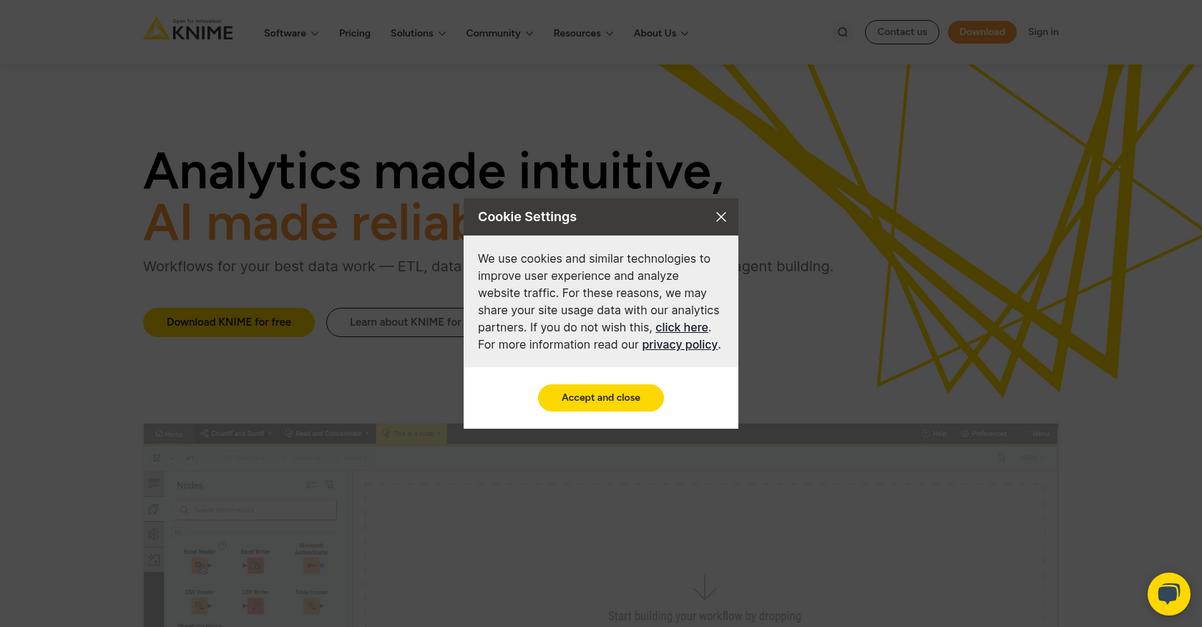
Struggling to make sense of your overwhelming data?
KNIME offers an intuitive visual workflow approach to tackle complex data and AI challenges, from ETL to predictive AI. This means you can easily blend and transform any data type from over 300 sources, then choose from a complete range of analytic and AI methods. KNIME simplifies advanced analytics, making it accessible for everyone. Here’s how you can gain meaningful insights.
KNIME addresses the challenge of managing diverse data by allowing you to connect nodes representing discrete actions like reading, transforming, and learning. This enables you to build workflows that depict sequential steps performed on your data. You can perform simple analysis like comparing budgets or advanced analysis using decision trees for understanding churn. Their visual workflows make complex data and AI work approachable for both business analysts and experienced data scientists. Additionally, KNIME is a single platform for end-to-end data science, ensuring sensitive data is kept safe, and your AI models are validated and monitored. Plus, it supports generative AI and deep learning, adapting as your needs evolve.
Improve your data-driven decision-making.
Before diving deeper, you might find my analysis of accreditation management software helpful for ensuring compliance and quality.
Key features:
- Visual Workflow Interface: Create, run, and re-run data processing and AI models visually, from simple cleaning to advanced analysis, with easy-to-understand nodes.
- End-to-End Data Science Platform: Securely manage your entire data science lifecycle, from data blending and transformation to deploying and monitoring AI solutions.
- Extensive Connectivity & Capabilities: Access any data type from over 300 sources, and apply a full range of analytic and AI methods, including deep learning and generative AI.
KNIME features, pricing, & alternatives →
Verdict: KNIME stands out as one of the best data mining tools for IT managers and data analysts seeking a powerful yet intuitive solution. Its visual workflow approach simplifies complex data and AI tasks, helping you accelerate pattern discovery and ensure data quality, leading to faster, more accurate decision-making for your organization.
5. Teradata
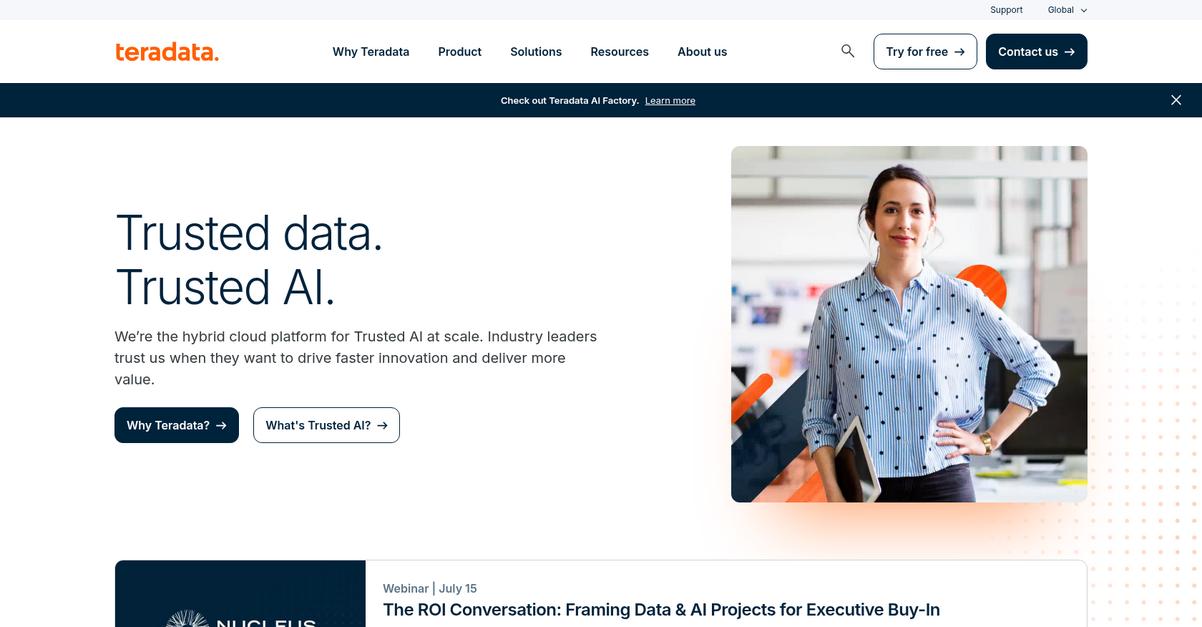
Struggling to unify diverse data for powerful insights?
Teradata’s hybrid cloud platform helps you unlock and harmonize all your data across the organization. This means your team can innovate faster, turning raw information into breakthroughs.
You can empower everyone across your organization to innovate faster by easily unifying and harmonizing all your data, addressing common pain points around data silos and accessibility. It’s about activating data-driven decision-making for real impact.
Here’s how you can make your cloud analytics perform better.
Teradata delivers harmonized data and faster innovation by transforming your data into insights using powerful, integrated AI and cloud analytics. It helps you accelerate value by fueling your most valuable growth opportunities.
Teradata helps your data scientists innovate with unlimited intelligence, allowing you to use your preferred tools and simplify AI operations with zero data movement. This is crucial when you’re looking to improve predictions and reduce time to value across your data universe. Additionally, data engineers can deliver harmonized data for all, improving access and simplifying management, while business leaders can drive performance and cost efficiency.
Plus, you can streamline governance and enable flexibility by connecting everything, making it easier to modernize your entire technology stack. This ultimately helps you accelerate insights and delight customers with more relevant experiences.
Innovate with unlimited intelligence and accelerate your insights.
Key features:
- Unify and harmonize all data to empower faster innovation and seamless access across your organization, eliminating data silos for comprehensive analysis.
- Integrated AI and cloud analytics transform raw data into actionable insights, driving breakthroughs and improved predictions for your decision-making.
- Cost-effective, elastically scalable cloud-native technology fuels AI/ML innovation, ensuring your platform grows with your data volumes while controlling expenses.
Teradata features, pricing, & alternatives →
Verdict: Teradata provides a robust hybrid cloud platform perfectly suited as one of the best data mining tools for IT managers and data analysts. Its ability to unify and harmonize diverse data, activate powerful integrated AI, and scale elastically ensures measurable improvements in decision-making speed, essential for complex enterprise environments. You can accelerate ROI with Trusted AI.
6. Dundas Data Visualization
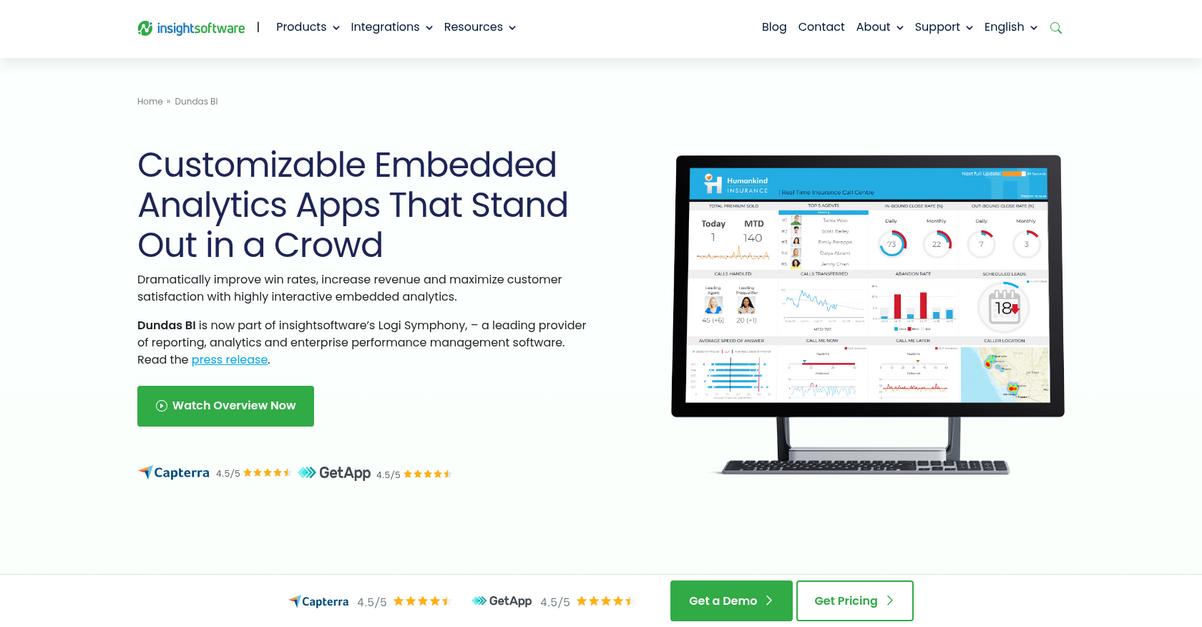
Struggling to balance data mining technicalities with budget limits?
Dundas Data Visualization offers an end-to-end platform, solving your BI and data analytics needs with revolutionary software. This means you can handle countless disparate data sources effectively.
Their platform allows you to securely drive profitability, productivity, and efficiency using real-time analytics, helping you avoid costly workflow disruptions and project delays. The result is streamlined analysis.
How can you unlock faster, better business decisions?
Dundas Data Visualization removes guesswork, providing customizable reporting and data analytics for game-changing insights. You get an unrivaled analytics experience across the board with their fully programmable, integrated BI platform. This means you can build, extend, and embed white-label data analytics solutions without constraints. The platform offers smart, interactive data visualizations, open APIs, and comprehensive BI capabilities for effortless data analysis. Plus, their unique licensing structure allows you to scale appropriately and achieve ROI rapidly.
Your success is their passion, ensuring you get a partner that solves problems.
If you are focusing on streamlining internal processes and empowering teams, our analysis of best HR mobile apps software provides valuable insights.
Key features:
- End-to-end platform: Offers a comprehensive solution for all your business intelligence and data analytics needs, simplifying complex data environments.
- Flexible deployment options: Provides choices for on-premises, unmanaged cloud, or managed cloud (SaaS), accommodating diverse IT infrastructures and preferences.
- Embedded analytics capabilities: Enables software vendors to integrate world-class analytics directly into their products, enhancing functionality and market readiness.
Dundas Data Visualization features, pricing, & alternatives →
Verdict: Dundas Data Visualization stands out as one of the best data mining tools due to its flexible, fully programmable platform and commitment to customer success. Its ability to handle diverse data sources and offer customized analytics experiences ensures you can accelerate pattern discovery and enhance decision-making speed across your organization.
7. Medallia
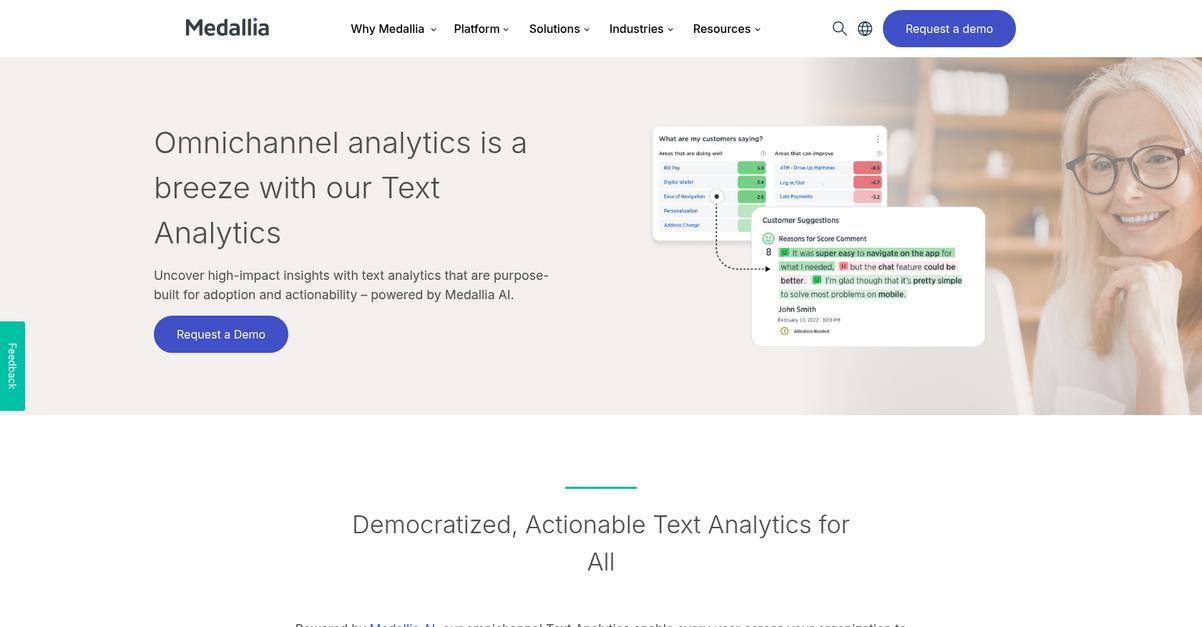
Struggling with data overload and tricky software integrations?
Medallia offers comprehensive feedback capture, turning diverse signals into meaningful data. This means you can consolidate information from surveys, social media, and calls for a unified view.
Their AI and analytics tools help you uncover essential insights from every interaction, making sense of complex conversations and prioritizing key opportunities. This ensures you’re not just collecting data, but actively extracting value from it.
Ready to gain deep insights from your data?
Medallia’s omnichannel Text Analytics, powered by Medallia AI, democratizes data mining, allowing everyone in your organization to quickly identify emerging trends at scale. You can pinpoint what happens—or doesn’t—in every interaction with text analytics that understands complex conversations. This capability extends to real-time text analytics that drive immediate action, automating alerts for emerging trends, prioritizing support tickets, and even scoring agents.
Additionally, their Natural Language Understanding (NLU) derives hidden meanings, themes, and sentiment in dozens of languages, saving you time and money. Plus, with out-of-the-box and customizable KPIs, you gain an objective and accurate understanding of experiences across your entire data landscape.
Achieve measurable improvements in decision-making speed.
Key features:
- Omnichannel Text Analytics: Transforms unstructured data from various sources like surveys, social media, and calls into action-oriented insights at scale.
- AI-Powered NLU: Derives implicit meaning, themes, sentiment, and emotions from data in multiple languages, saving time and reducing ownership costs.
- Customizable KPIs: Offers out-of-the-box and user-definable KPIs like sentiment and effort, providing objective and accurate understanding of experiences.
Medallia features, pricing, & alternatives →
Verdict: Medallia is one of the best data mining tools for large enterprises, enabling you to extract actionable insights from vast, complex datasets. Its AI and analytics capabilities, including omnichannel text analytics and robust NLU, help your team quickly identify trends and make data-driven decisions that bolster your outcomes, especially in industries like finance or healthcare.
8. The Apache Software Foundation

Struggling to find scalable, integrated data mining tools?
The Apache Software Foundation offers open-source software with over 320 active projects, widely used for diverse computing needs. This means you can find robust, community-driven solutions.
Specifically, tools like Fluo enable storage and incremental processing of large datasets, addressing common pain points with massive data volumes.
You need flexible, powerful solutions.
The Apache Software Foundation provides enterprise-grade projects that serve as the backbone for widely used applications. For example, Apache Polaris acts as a catalog for data lakes, giving you new levels of choice and control over data with enterprise security and Apache Iceberg interoperability across multiple engines and infrastructures. Additionally, Cloudberry Database, an open-source MPP database, ensures efficient processing for your large datasets.
This allows for seamless integration and accelerated pattern discovery.
Key features:
- Open-source software ecosystem: Access over 320 active projects, offering a wide range of flexible, community-driven tools to integrate into your existing analytics pipelines.
- Large dataset processing: Utilize tools like Apache Fluo for efficient storage and incremental processing of large data sets, supporting your growing data volume demands.
- Data lake catalog and security: Leverage Apache Polaris for comprehensive data lake cataloging, providing robust enterprise security and interoperability across various data engines.
The Apache Software Foundation features, pricing, & alternatives →
Verdict: The Apache Software Foundation, with its extensive collection of open-source projects for large datasets, databases, and big data, proves to be among the best data mining tools for IT managers and data analysts needing scalable, integrated solutions for rapid pattern discovery and enhanced decision-making.
9. Tableau

Struggling to make sense of your enterprise data?
Tableau Next helps you fuel faster data, insights, and action, transforming how your team utilizes data to solve problems. This means you can turn trusted insights into autonomous action, anytime, anywhere.
The platform is designed to make data analysis about asking questions, not learning software, empowering you to accelerate innovation and improve operations. This helps you avoid workflow disruptions.
Accelerate data-driven decisions with trusted AI.
Tableau unlocks your data’s full potential with agentic analytics, delivering trusted insights for everyone. You can breeze through data preparation and create visualizations faster with conversational AI. This allows you to connect to all your data sources with fully integrated AI/ML capabilities, governance, and data management. Additionally, Tableau offers visual storytelling and collaboration features for enhanced understanding. This empowers IT managers and data analysts to gain strategic clarity and efficiency.
The result is measurable improvements in decision-making speed.
Before diving deeper, you might find my analysis of best enterprise search software helpful to locate and manage your data efficiently.
Key features:
- Agentic analytics and AI: Unleash the full potential of your data with AI-powered insights and a trusted AI assistant to accelerate data-driven decisions across your organization.
- Comprehensive data integration: Connect to all your data sources with a broad, deep analytics platform offering fully integrated AI/ML, governance, and data management capabilities.
- Intuitive visual analysis: Ask questions of your data and create visualizations quickly, with built-in visual best practices for limitless data exploration without interrupting your flow.
Tableau features, pricing, & alternatives →
Verdict: Tableau is one of the best data mining tools for IT managers and data analysts seeking intuitive visual analytics, AI-powered insights, and seamless integration capabilities. Its ability to provide trusted data governance helps address concerns about data security compliance, as seen with Box fighting cyber threats effectively.
Conclusion
Struggling to find real insights?
Choosing the right data mining tool is a huge challenge. You must balance technical needs, scalability, and your budget without causing costly workflow disruptions.
The wrong choice doesn’t just waste money; it can stall critical projects and erode stakeholder confidence in your data strategy. Making a confident decision is absolutely essential for your long-term success.
Here is what I recommend.
From my experience, Altair RapidMiner is the top choice for your enterprise. It masterfully unifies diverse data while balancing powerful AI features with practical usability.
Its ability to connect siloed sources and activate ‘dark data’ is a real game-changer. When you use the best data mining tools like this, you directly accelerate pattern discovery and bolster your decision-making.
I highly recommend you book a free demo of RapidMiner and see for yourself how it can integrate into your systems.
Your entire data strategy will benefit.
